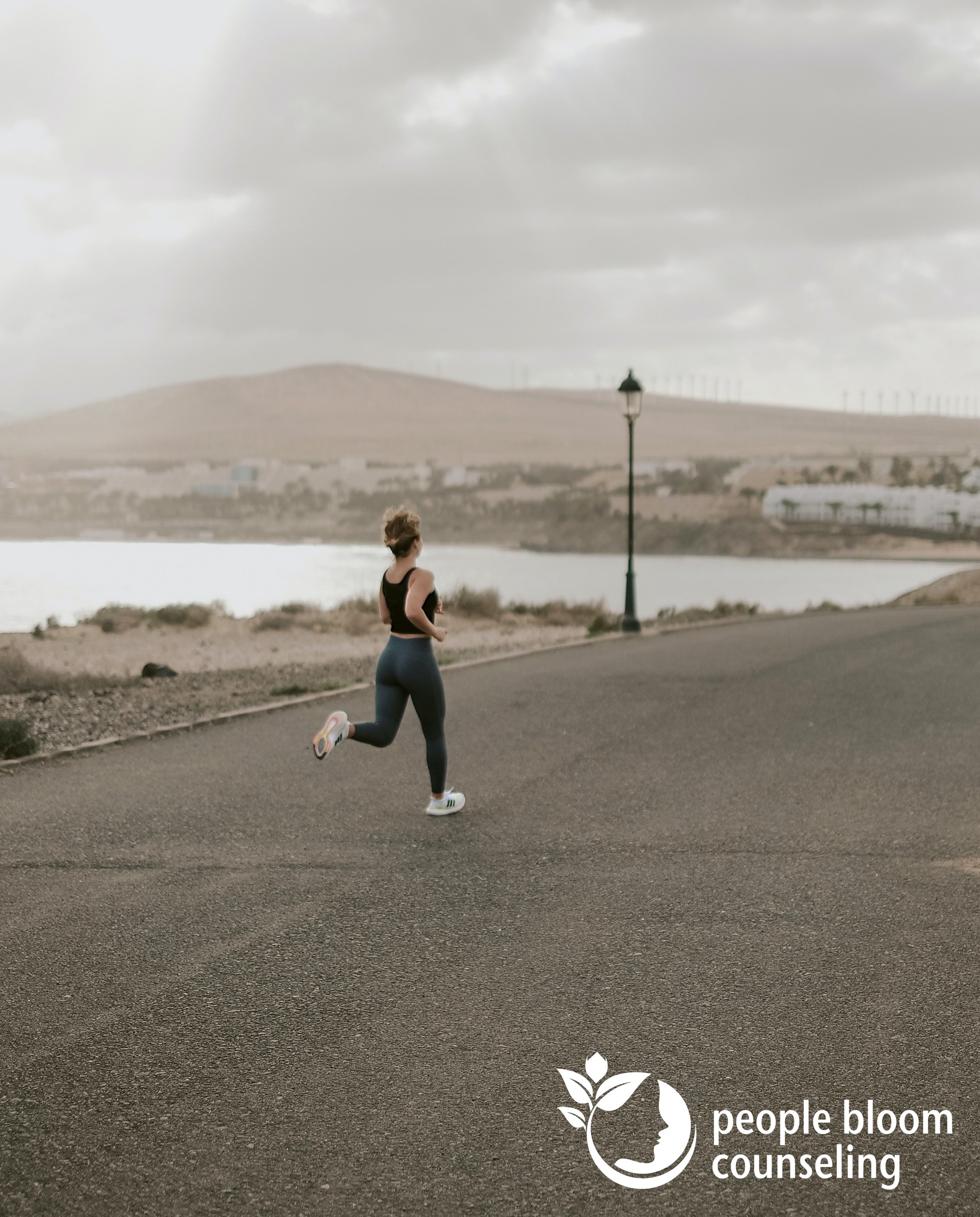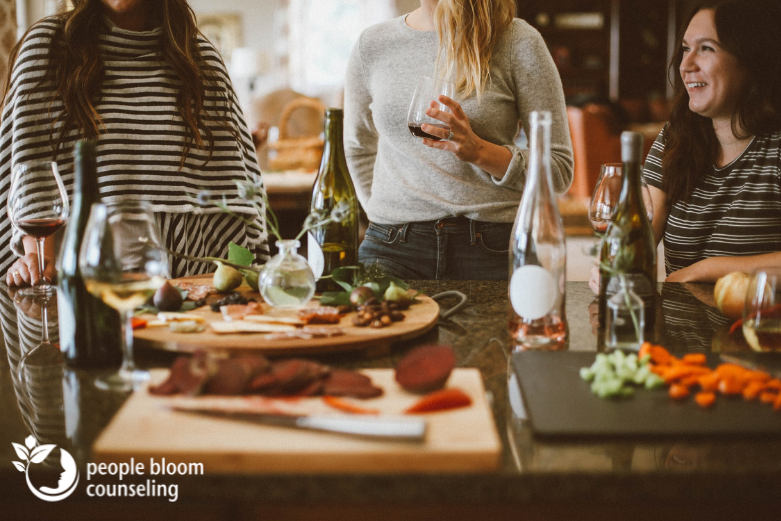What morning routine?
I know we don’t always have time to set up our day just right with a relaxing morning routine. But if you’ve ever done a wellness routine like meditation or yoga to start your day, you have to admit that the rest of the day goes more smoothly than days that you don’t, amiright?
Rushing around in the morning, jumping straight into whatever you have to do are all recipes for disaster. Whether it’s a work meeting, dropping kids off, or taking your Spanish exams - if you start right and mentally prepare for whatever the day brings, the tasks become easier and everything flows.
But you don’t always have the leisure to drop in on a morning yoga class, meditate and make a nutritious breakfast. Less time-consuming, small things also help prepare you for your day, and these are the ones that have helped me.
Choose how you spend your time
With many of us working from home, we have a little more time in the morning than we would if we had to commute to an office. Let’s make the most of this time to do what’s right for your body and mind. And then there’s the social media problem. Consider how much time you spend waste scrolling endlessly, filling your mind with fluff and custom-tailored advertising just to you. The cost-benefit analysis isn’t great when you think of the hours spent and very little gained. Consider instead devoting just a smidgen of that time to something that will help you later.
Consciously choosing how we spend our time gives us back a bit of the control we feel like we’ve lost as the world continues to throw new apocalyptic curve balls at us.
Let’s say you only have 10 spare minutes in the morning. Here are some ideas for how to spend it wisely.
Move your body
Do stretches, do yoga, walk the dog, or roll around on the floor with your toddler - whatever moves that sack of bones and makes you happy. If you’re feeling ambitious, teach yourself a Youtube dance, or do a pilates video.
It can be as quick as 10 minutes, but if you do more, give yourself a pat on the back. The nice thing about movement is that there is no movement too big or too small to count - meet yourself wherever you’re at and do what your body allows, even if you’re a little creaky. What matters is that you get your blood flowing and joints loosened up for the day ahead. This is especially crucial when you’ll be sitting in front of a screen for much of the day.
Don’t forget to stretch your...vocal chords?
I discovered a trick by complete accident recently: it turns out singing to/at my dogs distracts them from whatever bad behavior they’re up to. Let me explain. The two nudniks were rolling around like maniacs nipping each other’s necks, which is all fun and games until someone gets hurt. When one dog inevitably went too far and the other yelped, instead of yelling at them as usual, I belted out “stop! in the name of love”...you know the rest. I may have added a little booty shake. They stopped, turned and looked at me. They were at my mercy, waiting for the rest of the lyrics.
Ever since then, I sing out my commands - mind you this has to be a forceful singing with operatic gusto. When I do, my dogs are mesmerized and mellow out. Even stranger, I noticed it mellows me out as well. I feel centered and calm after letting it all out. This is reflected in my voice after I do it. My voice is steadier and this makes me feel more equipped to face meetings, trainings, and talk to family.
Mental health experts have corroborated this effect: humming and vocalizing can contribute to healing trauma, notably discussed by Resmaa Menakem in My Grandmother’s Hands, his work about healing racialized trauma. I can imagine how singing would be beneficial for trauma, considering how much it helped with my stress and anxiety.
I don’t know about you, but for me, stress fries my vocal chords. My voice gets hoarse, weak, and I have a hard time projecting. Asserting my loudest, most confident singing voice in the morning wakes up my vocal chords and empowers me to be assertive in daily life. Singing has a physiological grounding effect on the body. So go for it - sing your heart out in the shower tomorrow morning and see how you feel!
Switch out the coffee for a wellness drink
Before you start accusing me of taking your coffee away - hear me out! If you’re a coffee junkie, I only mean for this to be an occasional replacement to mix things up, or even just an add-on item if you insist on your daily coffee fix. I wouldn’t dream of robbing you of the life-giving energy juice. However! Sometimes your body craves something more replenishing. Try starting your morning with a wellness toddy a couple times a week. It takes no longer than making coffee, and it’s a good way to leave behind a tired routine. Use your favorite herbs and spices in whatever combination you like. My favorite toddy combines turmeric, lemon or lime juice, hot water, and honey. Add some chili powder if you’re the spicy type. Steep some basil or mint if you like it herby. On hot summer mornings, make a superfood smoothie instead.
My turmeric tonic is full of antioxidants and Vitamin C, has anti-inflammatory benefits, and can energize you for the day ahead. Coffee is great for that mad jolt, but a wellness toddy has longer-lasting effects to make you feel warm and centered.
Make yourself presentable, even if just for yourself
It’s all too easy to stay in the same clothes that you slept in all day, especially for those of us working from home and when we feel like there’s no one around to stop us (or no one to impress!). But whether you have to leave the house or not, making yourself presentable in the morning is key to feeling good the rest of the day.
Even if you don’t have anything planned, change out of the PJs, and put on something comfortable but presentable that makes you feel confident. Don’t forget your face. Moisturize, put on sunscreen, do that thing that brings out your favorite feature. It doesn’t take long, and it can make a difference.
You’ll be more ready to face whatever comes your way the rest of the day. You don’t want to get caught off guard answering the door in your bathrobe, or running out for that appointment you forgot about in your pink comfy pants because you didn’t take the time to get ready earlier.
Set intentions for the day
Are you stressed about something coming up? Instead of just running into it head on and being stunned by the results, try facing it deliberately and with intention. Let’s say you have an interview or presentation you’re stressed about - imagine how you want it to go. Visualize being in a calm state of mind when doing the task at hand.
Writing down your intentions is key. The act of writing helps make things a reality. Whether it’s because it reinforces your desires subconsciously, or because you refer back to the physical writing throughout the day, it helps organize your thoughts.
Intentions can be reminders that regulate your emotional state and help you achieve goals. This is one of my recent intention lists from a weekday morning in the last week:
Approach things with curiosity
Stay grounded in my body
Find joy in the dogs, even when you worry about them
Discipline the dog from a place of love, not anger
Can you tell the dogs have been a focal point in my life lately? They were a great outlet for me to practice my intention setting. But you can do this with anything in your life, whether it’s a source of joy, anxiety, worry, anticipation, or anything that makes you feel emotionally unregulated. These are reminders for how to approach your day to keep the freak-outs at bay. That just rhymed, didn’t it?
If you need additional support, we’re here
As always, if you need more than what this blog has to offer, our clinicians are here to help. Sometimes having a neutral person brainstorm ideas with you is better than going about it alone. If you need help filing your taxes, cleaning your house or training your dog, that’s what accountants, cleaning service and dog trainers are for. We can’t help you in those other areas of your life, but for your mental health needs, we’re here for you.





















